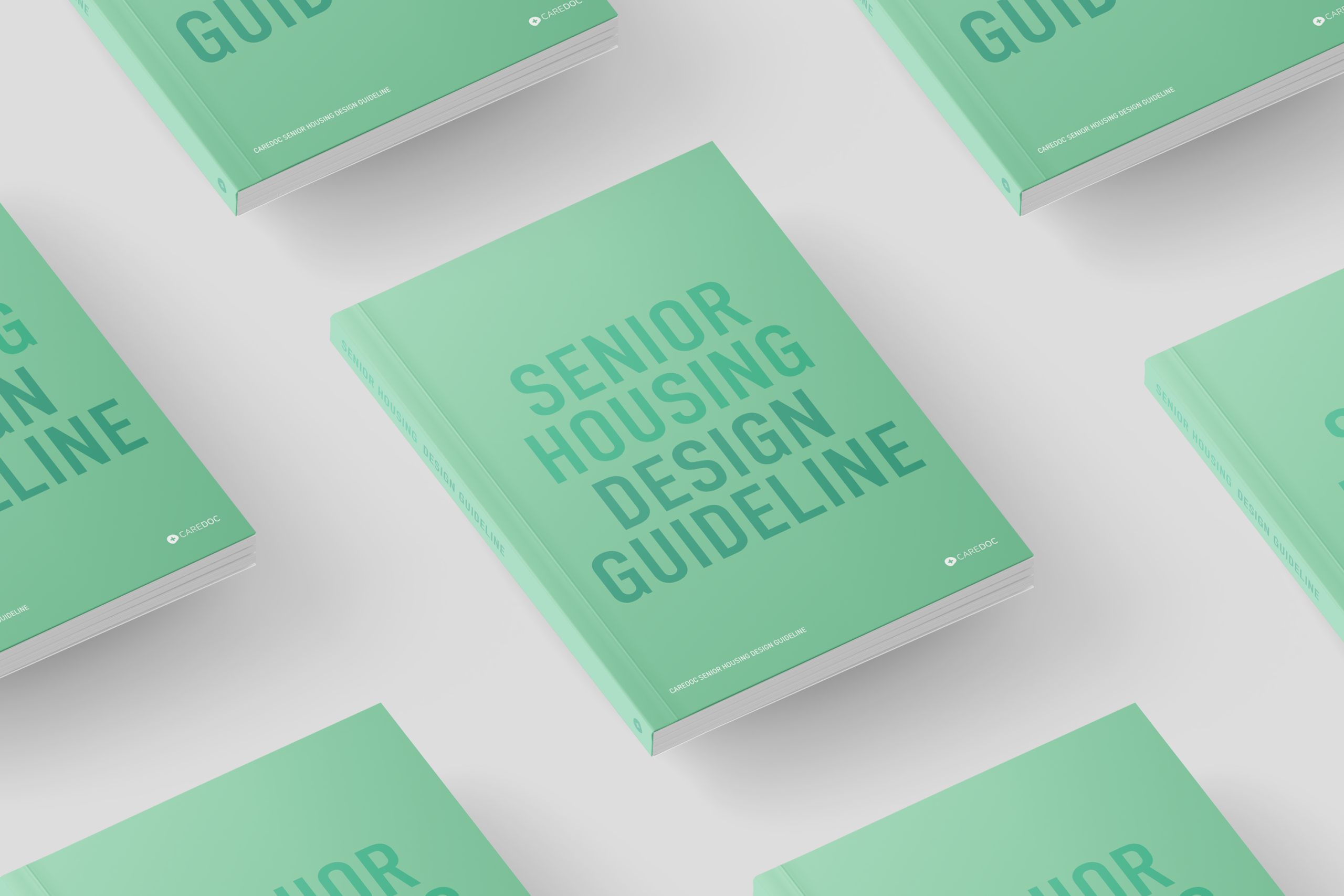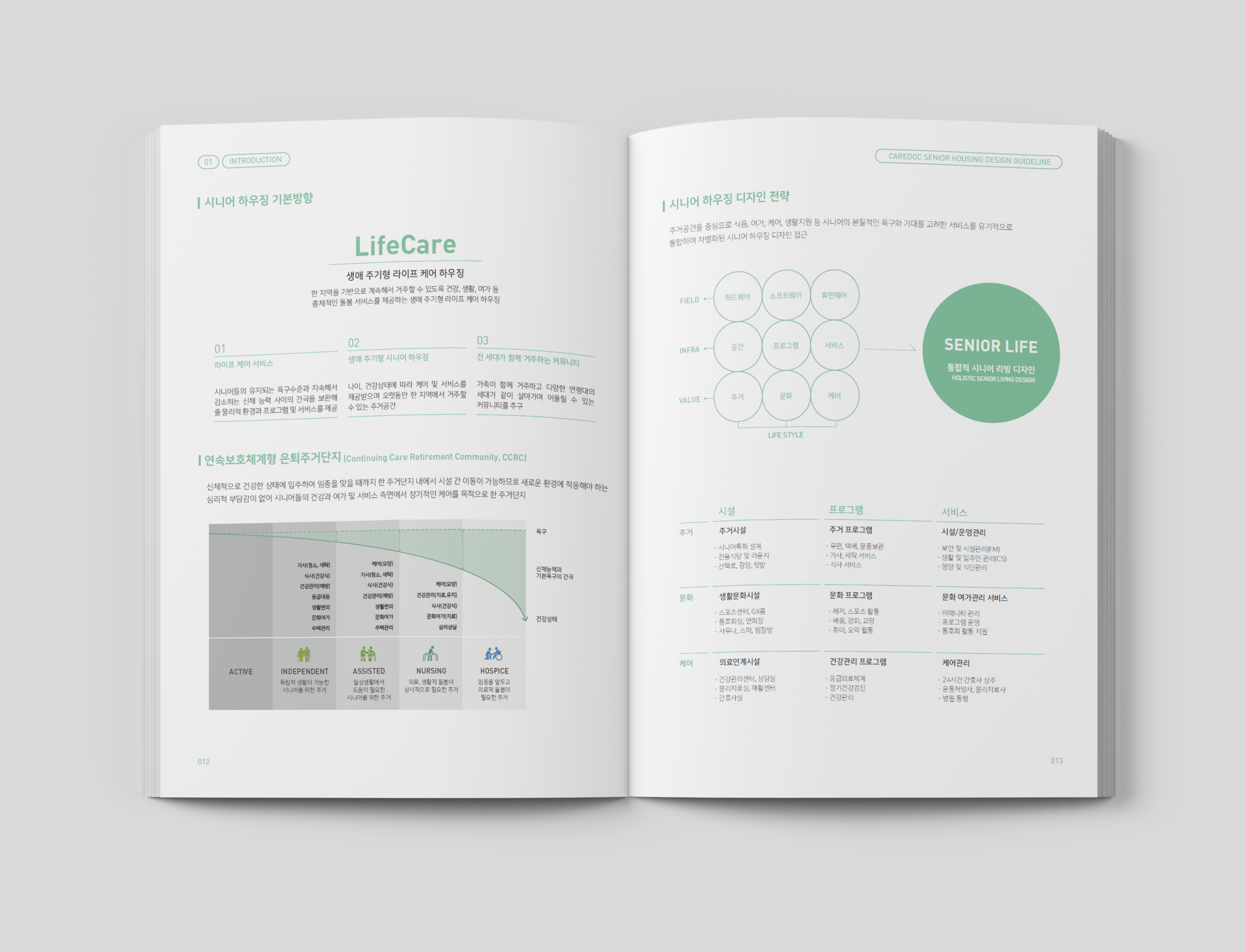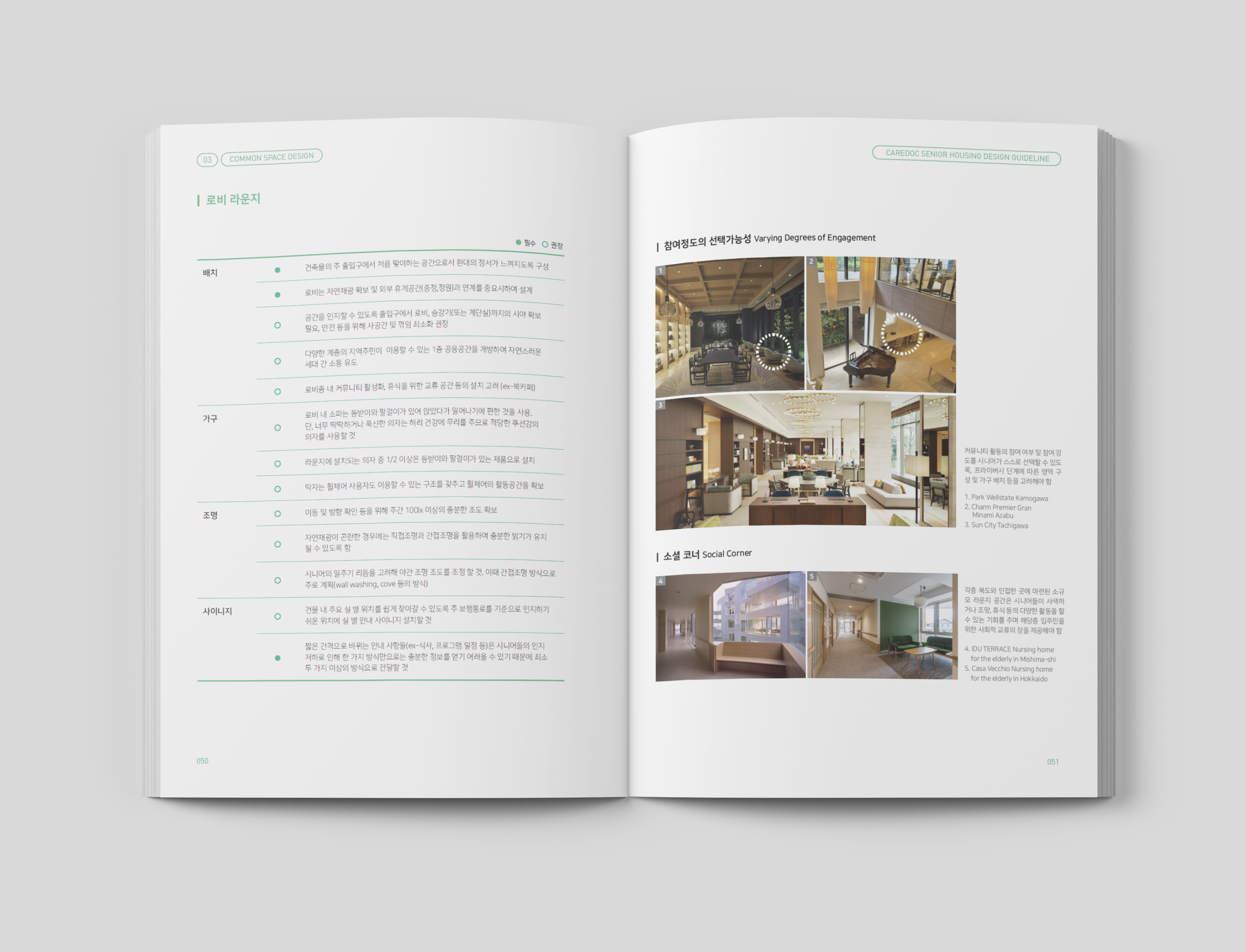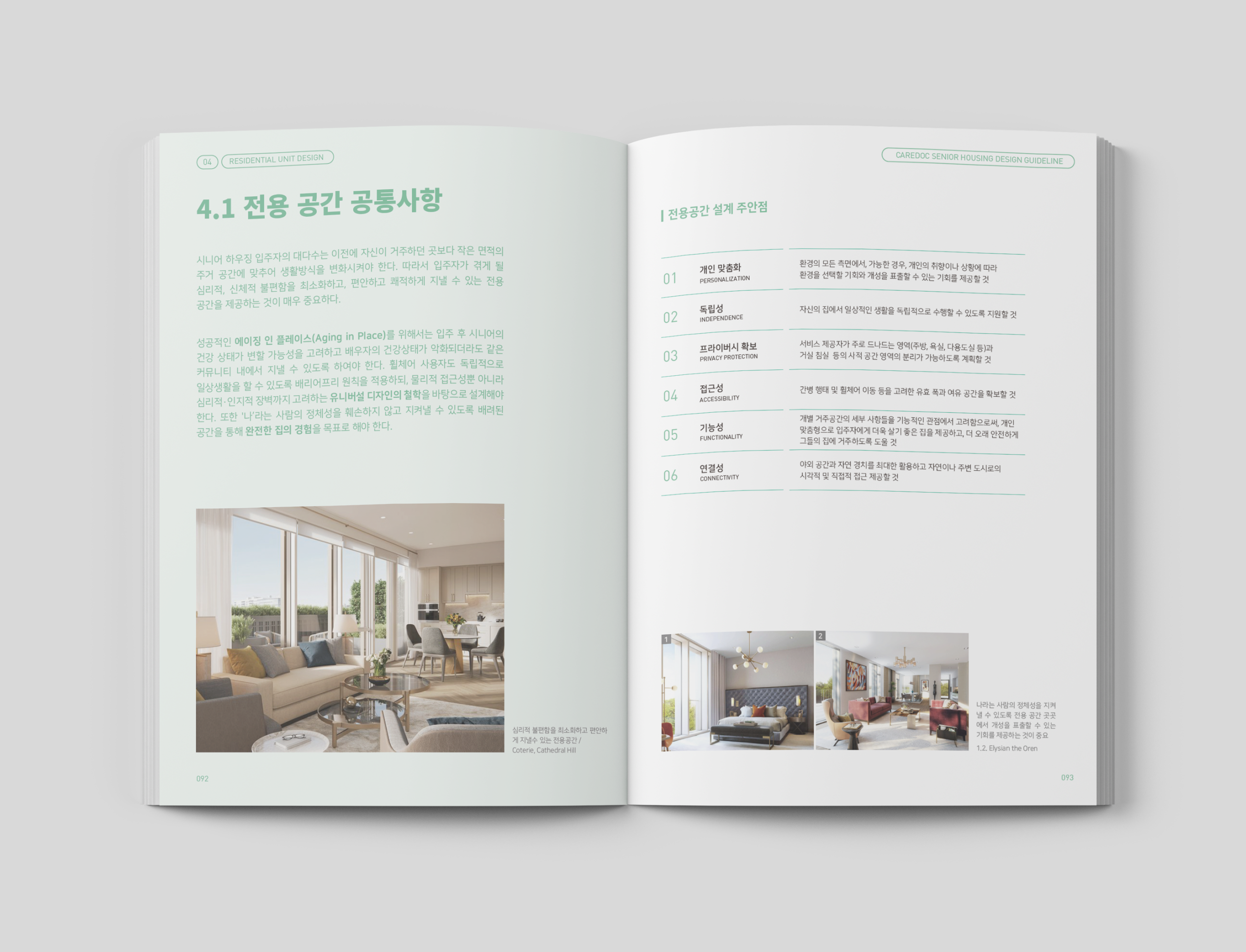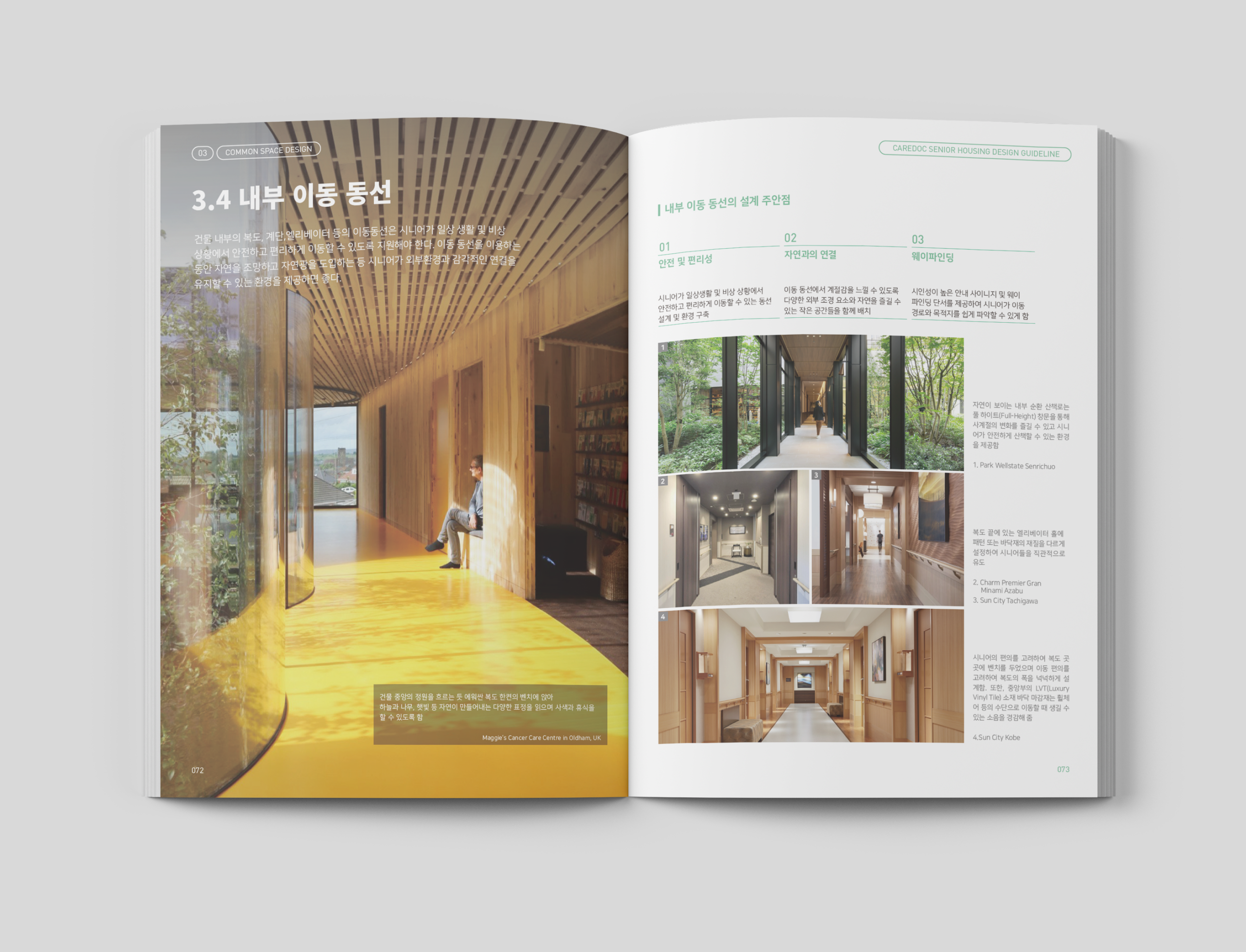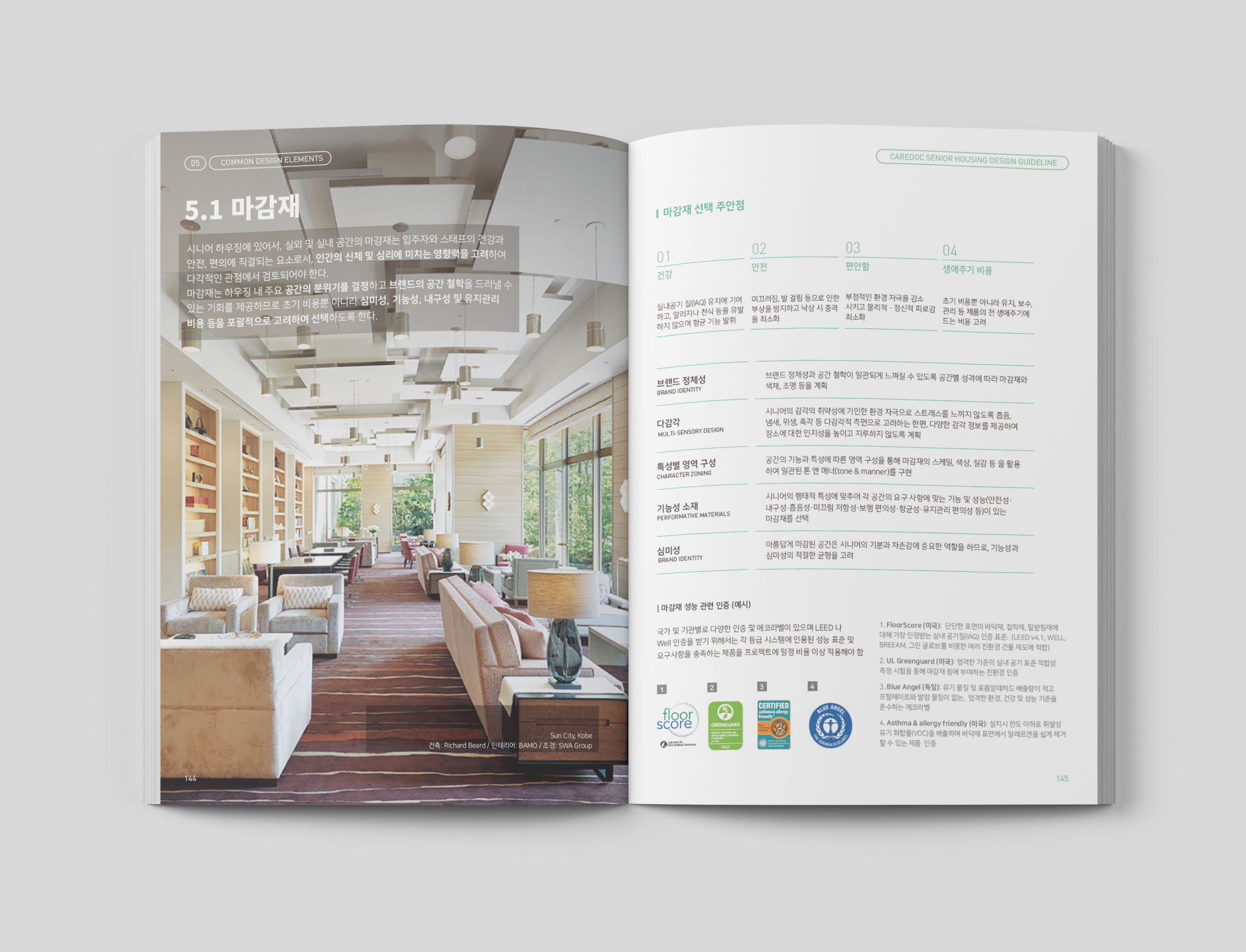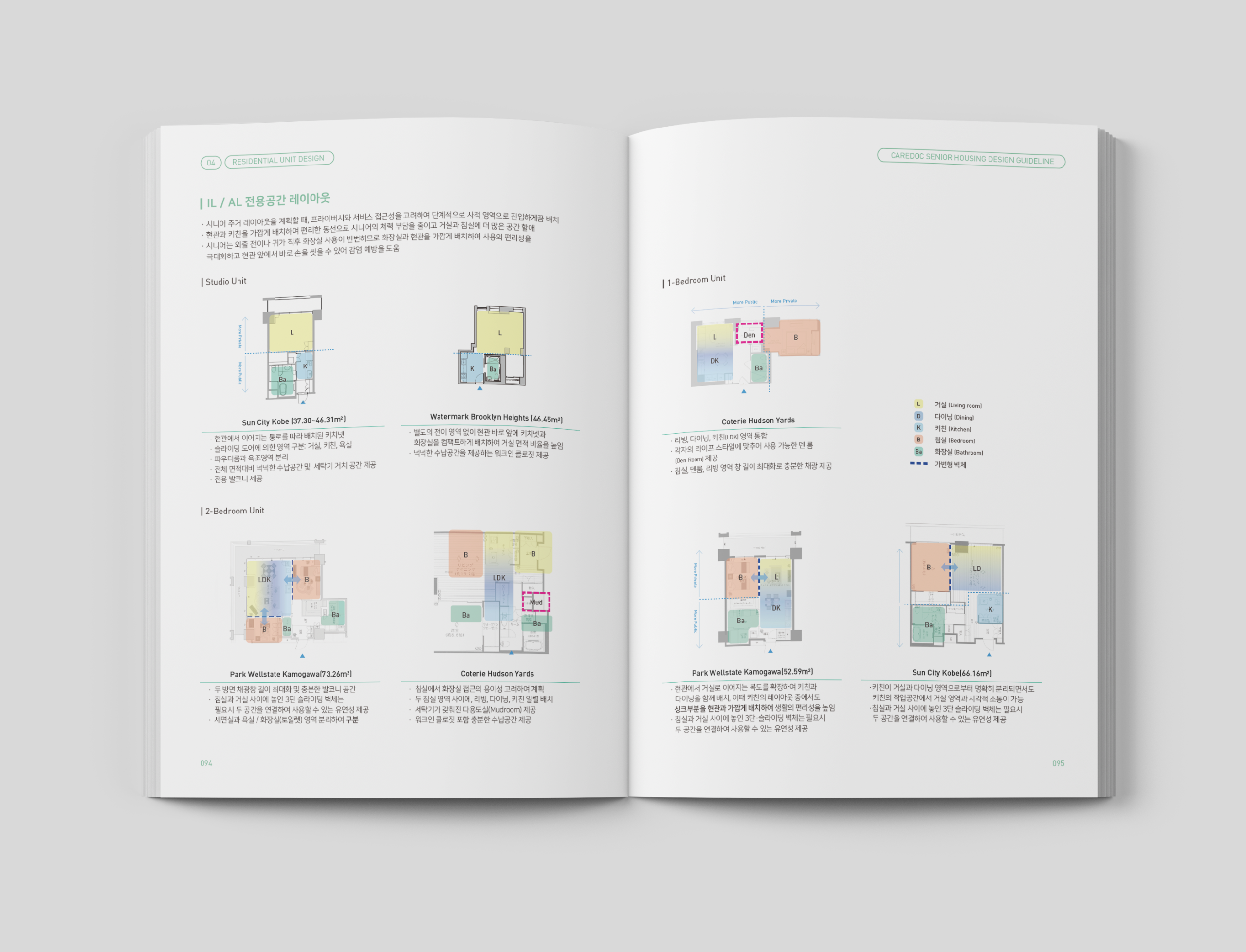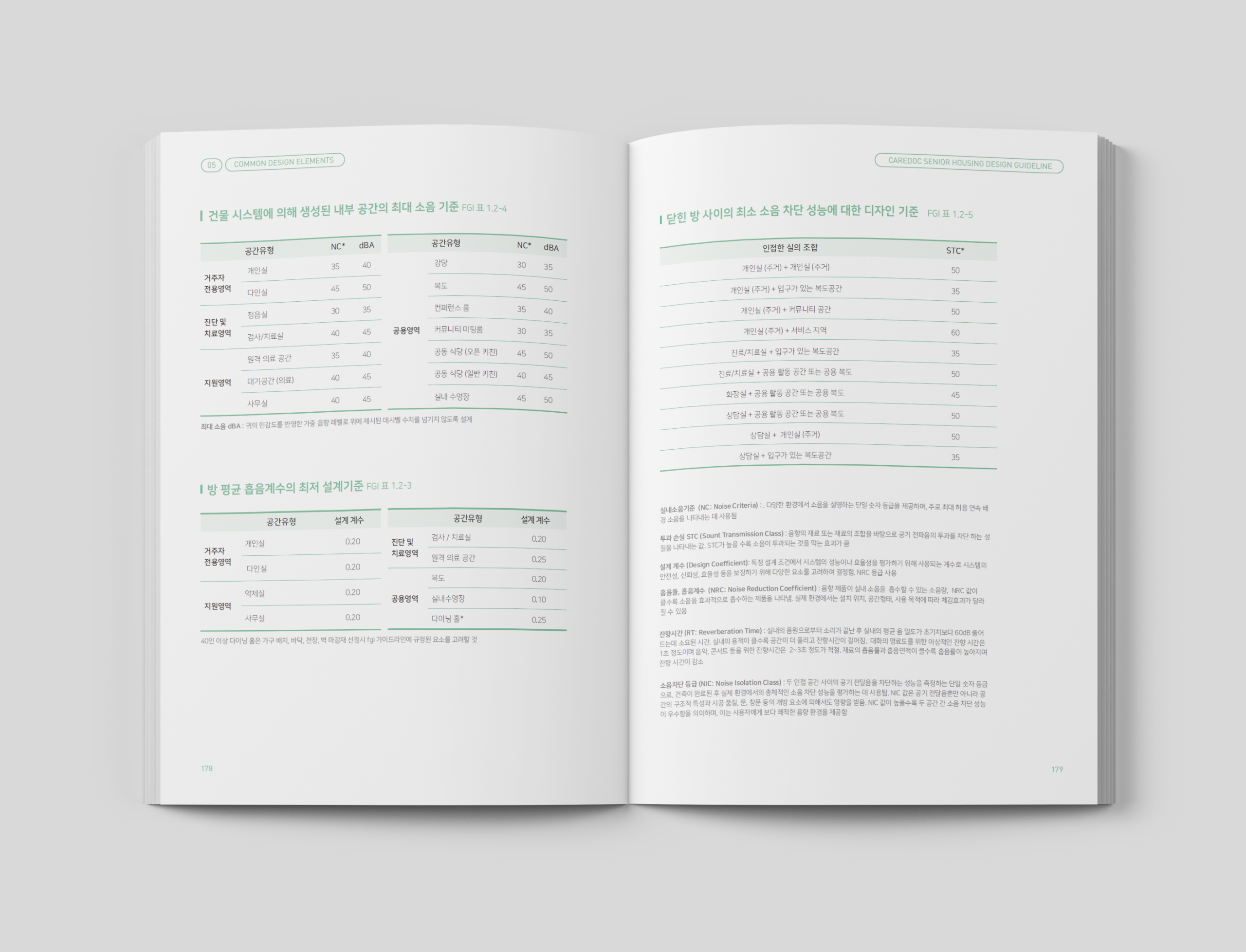Senior Housing Design Guideline
케어닥 시니어 하우징 디자인 가이드라인
Senior housing should transcend traditional institutional- and facility-centered models by providing care environments that respond to changes in residents’ health status, guaranteeing lifestyles aligned with individual preferences, preserving independence in daily activities, and facilitating sustained engagement with the community. This guideline has been developed to establish comprehensive and practical standards for senior housing, aiming not only to enhance the physical design of residential spaces but also to promote holistic senior care and improve overall quality of life. It aspires to serve as a new benchmark for senior living environments.
The basic principles of senior housing outlined in this guideline are as follows. First, Life Care Services aim to bridge the gap between the ongoing needs of seniors and the gradual decline in their physical abilities by providing physical environments and various programs and services. Second, Lifecycle Senior Housing refers to residential spaces where seniors can receive appropriate care and services based on their age and health status, allowing them to live in the same area for an extended period. Third, Intergenerational Communities focus on fostering communities where not only families live together but also different generations coexist and interact.
시니어 하우징은 기존의 제도적·시설 중심 모델을 탈피하여, 건강 상태의 변화에 따라 적합한 돌봄 환경을 제공하고, 개인의 선호에 맞춘 삶의 방식을 보장하며, 일상생활에서의 독립성을 유지하고 지역사회와의 지속적인 연계를 가능하게 하는 다차원적 주거 환경을 마련해야 한다. 우리는 물리적 주거 공간 설계를 넘어서 시니어 주거 환경을 개선하고 삶의 질을 향상하기 위한 총체적 시니어 케어를 지향하며 시니어 주거의 새로운 기준이 될 수 있는 포괄적이고 실용적인 지침을 제시하고자 본 가이드라인을 작성하였다.
이 가이드라인에서 전제하고 있는 시니어 하우징의 기본 방향은 다음과 같다. 첫째, ‘라이프케어 서비스’는 시니어의 지속되는 욕구와 점차 저하되는 신체 능력 사이의 간극을 보완하기 위해 물리적 환경과 다양한 프로그램, 서비스를 제공한다. 둘째, ‘생애주기형 시니어 하우징’은 연령과 건강 상태에 따라 적절한 케어와 서비스를 받으며, 오랜 기간 한 지역에서 거주할 수 있는 주거 공간을 의미한다. 셋째, ‘전 세대가 함께 거주하는 커뮤니티’는 가족 단위의 거주뿐 아니라 다양한 세대가 어우러져 함께 살아가는 공동체를 지향한다.
“성공적인 에이징 인 플레이스(Aging in Place)를 위해서는 입주 후 시니어의 건강 상태가 변할 가능성을 고려하고 배우자의 건강상태가 악화되더라도 같은 커뮤니티 내에서 지낼 수 있도록 하여야 한다. 휠체어 사용자도 독립적으로 일상생활을 할 수 있도록 배리어프리 원칙을 적용하되, 물리적 접근성뿐 아니라 심리적·인지적 장벽까지 고려하는 유니버설 디자인의 철학을 바탕으로 설계해야 한다. 또한 ‘나’라는 사람의 정체성을 훼손하지 않고 지켜낼 수 있도록 배려된 공간을 통해 완전한 집의 경험을 목표로 해야 한다.”
“시니어 하우징에 있어서, 실외 및 실내 공간의 마감재는 입주자와 스태프의 건강과 안전, 편의에 직결되는 요소로서, 인간의 신체 및 심리에 미치는 영향력을 고려하여 다각적인 관점에서 검토되어야 한다.
마감재는 하우징 내 주요 공간의 분위기를 결정하고 브랜드의 공간 철학을 드러낼 수 있는 기회를 제공하므로 초기 비용뿐 아니라 심미성, 기능성, 내구성 및 유지관리 비용 등을 포괄적으로 고려하여 선택하도록 한다.”
Project CAREDOC Senior Housing Design Guideline
Year 2024
Type Research and Publication
Theme Senior Living Planning, Elderly Care Design
Team Okhyun Kim in collaboration with SOAP
